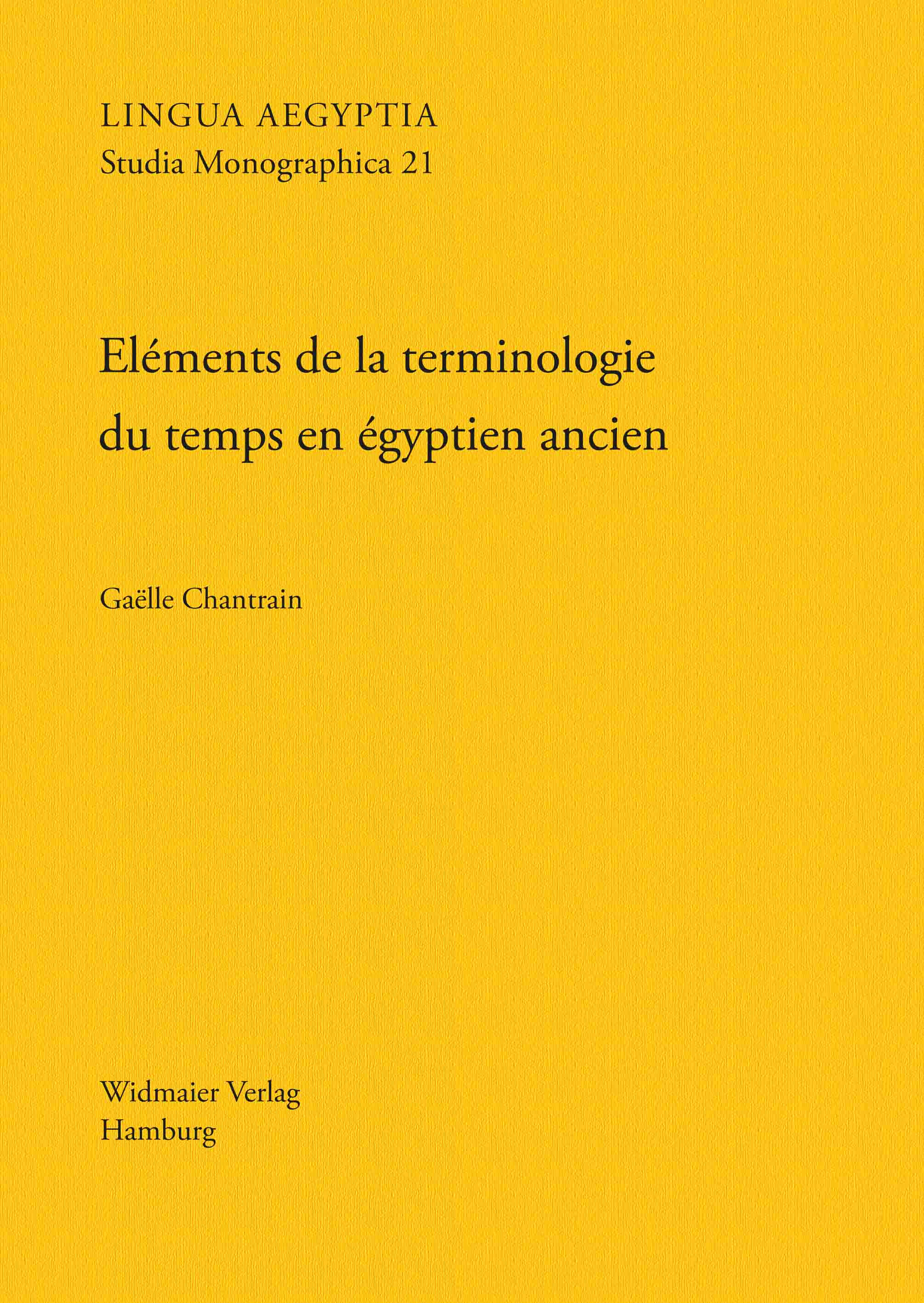This book has a double scope: first, bringing a contribution to the knowledge and understanding of the time conceptions in Ancient Egypt through a lexical study and, second, contributing to the definition of a methodological frame for lexical semantics in Ancient Egyptian.
In the introduction, the reader will first find a state of the art from the point of view of time-related studies in Egyptology, lexical semantics studies, and classifiers studies. The next introductory sections deal with the links between time, space and motion, with the complexity of time conceptions in Ancient Egypt, and with the impact of this plural vision on the lexicon.
The first part of the core study aims at establishing a proposition of canvas for the semasiology of nouns. It also presents the semasiological analysis of eight lexemes belonging to the unbounded time domain: A.t (moment), wnw.t (hour), nw (moment), tr (time), h#w (epoch), rk (epoch), oHow (lifetime) and Hnty (period).
The second part is dedicated to the onomasiology of the unbounded time domain, as well as some of its connections with some contiguous domains like space.
Content overview
0.1 État de la question
0.2 Objectifs de la présente étude
Partie I : Notions théoriques
- I.1 Définitions
- I.2 Temps, espace et mouvement
- I.3 Le temps en Égypte ancienne : une conception plurielle
- I.4 Corpus
- I.5 Méthodologie
Partie II : Sémasiologie
- II.0 Introduction aux analyses de sémasiologie
- II.1 #.t
- II.2 wnw.t
- II.3 nw
- II.4 tr
- II.5 h#w
- II.6 rk
- II.7 oHow
- II.8 Hnty
- II.9 Récapitulatif des sémèmes identifiés
Partie III : Onomasiologie
- III.1 Définition des significations-types
- III.2 Oppositions structurelles au sein du réseau sémantique
- III.3 Organisation du sens
IV Conclusions
Liste des abréviations employées
Bibliographie
Index des passages cités
